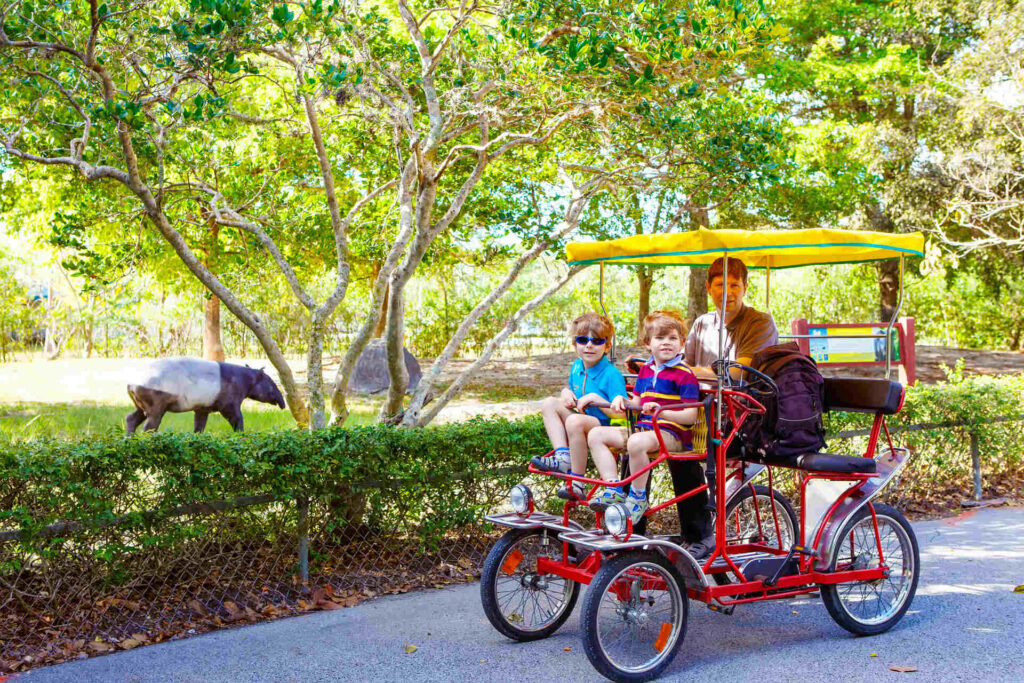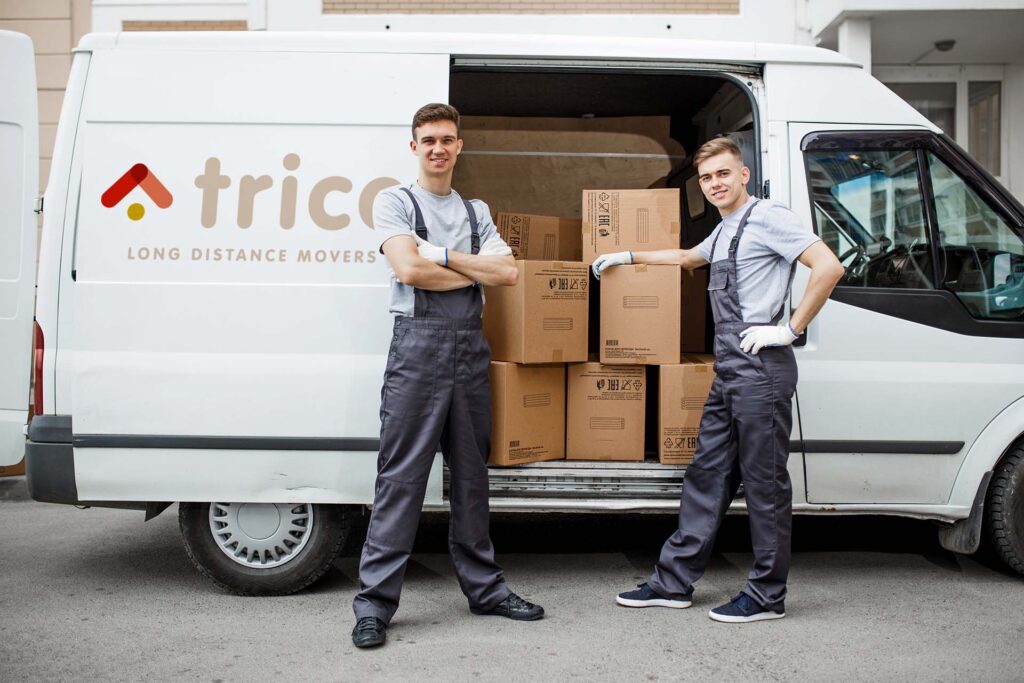Are you planning on moving to Miami but not sure where to start? Know that the path to this sun-kissed metropolis, with its vibrant culture and pristine beaches, begins with thorough research and organization. Rest assured, the effort will be well worth it. Our guide is here to help you navigate the transition, ensuring your experience is as smooth and enjoyable as the city’s renowned lifestyle.


The Magic City is famed for its splendid climate and multicultural tapestry, attracting hordes of visitors annually. Interestingly, it’s not just tourists flocking to the city. On average, 250 individuals relocate here daily.
US Census’s survey reveals that many newcomers hail from New York (10%), California (11%), and other Floridian cities (11%). Texas also contributes 7% to Miami’s growing population, with states like Georgia, Alabama, and Arizona each accounting for about 3% of new residents. Moreover, Miami’s allure crosses national borders, with approximately 3% of its new residents arriving from international locations.
Why is moving to a new city a good idea? For starters, the Magic City beckons with its year-round warmth and a cultural mosaic that turns everyday living into a continuous discovery. The pros of relocating to Miami include access to world-renowned beaches and a thriving job market, especially in hospitality and real estate. Also, there is no state income tax, which can mean significant savings. The city’s nightlife and entertainment scene are unrivaled, providing a vibrant backdrop for both the young and the young at heart.
However, moving there does come with some cons. The cost of living can be high, with housing prices soaring above national averages. Traffic congestion is another challenge. It’s often turning short commutes into prolonged journeys. Additionally, while the weather is mostly sunny, these areas are prone to hurricanes. Despite these slight drawbacks, its positive allure often outweighs the negatives for many looking to call this city home.

Before you jump the train and relocate to another state, it is important to conduct thorough research and plan your relocation around it. Miami’s rich tapestry weaves together a city as diverse as its people. This gem has something to offer for every lifestyle and preference. From safe neighborhoods and the Art Deco splendor to bohemian streets and urban luxury, the city is a kaleidoscope of vibrant communities.
Each of these areas presents its unique blend of culture, convenience, and community. Whether you’re building a family, forging a career, or creating a life all your own, there is something for everyone. Here are some of the best neighborhoods you should look into:
The city’s economy is bolstered by a robust tourism sector, international trade, finance, and a growing tech scene. With its strategic position as a gateway to Latin America, Miami also excels in logistics and international business.
Healthcare is another significant industry, with numerous prestigious facilities and research institutions. The burgeoning art and culture sectors further diversify the employment landscape, ensuring that no matter your expertise, it has a place for your talents.
When it comes to getting a job in another new city, your network can be as crucial as your resume. Before cross-country moving, tap into Miami’s extensive professional networks through online platforms like LinkedIn and local business forums. Attending virtual events or webinars held by Miami-based businesses will help you get a job before relocating.
If you have decided to relocate without a job, continue to expand your network. Join local chambers of commerce, attend industry meetups, and engage with community events. Utilize local employment resources such as CareerSource South Florida, which offers job listings and training programs.
Consider working with a local recruiter who specializes in your field to navigate the job market effectively. Remember, a multicultural environment means that bilingual skills are highly valued. So, if you’re proficient in a second language, highlight it during your job search.

This city, brimming with cultural richness, reflects its educational ethos in the variety of its programs. It offers options from public schools focusing on technology and the arts to private institutions steeped in tradition and innovation. However, for families, the choice between two schooling systems can hinge on various factors.
Some of these include curriculum focus, proximity, and specialized programs. Public schools like Design and Architecture Senior High (DASH) and New World School of the Arts are nationally recognized for their excellence. Private schools such as Ransom Everglades and Gulliver Prep, on the other hand, offer rigorous academics coupled with a broad range of extracurricular activities.
When it comes to higher education and specialized training, this area is a goldmine. The city is home to top-rated institutions like the University of Miami and Florida International University, which offer cutting-edge programs across all disciplines.
Miami Dade College stands as a beacon of opportunity, offering an extensive suite of vocational and certification courses. These are in sync with the dynamic job market, paving the way for robust employment prospects post-graduation.

This is home to the world-famous art street of Wynwood Walls and high-caliber performances at the Adrienne Arsht Center for the Performing Arts. It is also a melting pot of music.
Hosting international festivals that showcase everything from Latin beats to electronic dance. Museums like Pérez Art Museum and The Bass cater to art enthusiasts. History buffs can revel in the stories preserved at the History Museum.
As the sun goes down, bustling nightlife takes center stage. This area is speckled with dining and entertainment hotspots. South Beach’s Ocean Drive is iconic for its vibrant clubs and Art Deco hotels with lively bars.
Brickell offers a more upscale night out with chic cocktail bars and rooftop lounges. For foodies, the dining scene is a culinary adventure with flavors from all corners of the globe. It is celebrated in establishments ranging from gourmet restaurants to local food trucks.
The warm climate lends itself to a bounty of outdoor and family-friendly activities. The Bayfront Park and Oleta River State Park provide a green escape for those in love with nature, picnics, biking, and water sports.
Families can explore the Seaquarium, Zoo, and the Phillip and Patricia Frost Museum of Science for both fun and educational experiences. On the other hand, beaches are not just for sunbathing. They are hubs of activity where families and friends gather for volleyball, jet-skiing, or simply to enjoy the horizon where the sky meets the Atlantic.

When compared to other major cities in the United States, Miami sits on the higher end of the cost of living spectrum. However, it still remains more affordable than living in New York City and San Francisco. On a positive note, the absence of a state income tax in Florida can offset some costs. But it’s essential to account for the city’s housing, which can vary dramatically from neighborhood to neighborhood.
Below is a table that outlines the average costs you can expect here. This will give you a clearer picture when setting your relocation budget and the funds you’ll need to comfortably embrace your future lifestyle.
| Expense Category | Average Cost | Comparison to the National Average |
|---|---|---|
| Housing & Real Estate | $350,000 (median home cost) | +88% |
| Rent (1-bedroom apartment) | $1,800/month | +50% |
| Groceries | $400/month (for a single person) | +10% |
| Utilities (Electricity, Heating, Cooling, Water, Garbage) | $130/month (for a 915 sq ft apartment) | +5% |
| Transportation (Monthly Pass) | $100 | +25% |
The key to a seamless and easy relocation is a well-structured timeline and checklist. Begin by selecting a moving date, ideally avoiding peak hurricane season. Compile important documents, arrange for school transfers if needed, and schedule utility cutovers.
Research local regulations for vehicle registration and update your address with the postal service. It’s crucial to familiarize yourself with the city layout, public transportation routes, and emergency services. Ensure you also have a basic understanding of the local healthcare system and insurance requirements.
Relocation can be a tangled mess, but with professionals guiding the way, it can be a stress-free experience. Our team at Trico Long Distance Movers specializes in easing the burden of moving. With our comprehensive long-distance moving services, we handle the logistics of shipping your belongings to another state with precision and care.
Our packing services ensure that your items are safely secured for the journey, using quality materials and expert techniques. From the largest piece of furniture to the smallest family heirloom, we ensure everything arrives at your new Miami home just as it left.

Hiring a long-distance moving company can help you avoid relocation stress and make the whole experience a breeze. Trico Long Distance Movers will take a significant load off your shoulders. Our expert team will handle every aspect of your journey.
With our movers by your side, you can turn your focus to the exciting aspects of life that await you. Don’t shy away from reaching out today and booking our team for a smooth transition. You’ll transition from a newcomer to feeling like a local in no time.
Start by scouring job boards and local classifieds online. Networking is key, so connect with local industry groups and attend job fairs. Leveraging social media platforms like LinkedIn can also be beneficial. Additionally, consider local employment agencies that specialize in your field of expertise.
The city offers a wealth of nightlife options, from trendy bars and clubs to live music venues. For more laid-back entertainment, there are art galleries, movie theaters, and a variety of dining experiences. Don’t forget the many outdoor activities available, such as beach sports and boating.
It’s a melting pot of cultures, so being open and respectful to a variety of traditions is important. Spanish is widely spoken, so a basic understanding of the language can be helpful. Also, be prepared for a more relaxed approach to time and punctuality in social settings.
Research different neighborhoods to find one that fits your budget. Online real estate listings are a good starting point, and local newspapers can have hidden gems.
Working with a realtor can also provide access to listings that may not be widely advertised. Consider looking for housing slightly outside of the city center for more affordability.